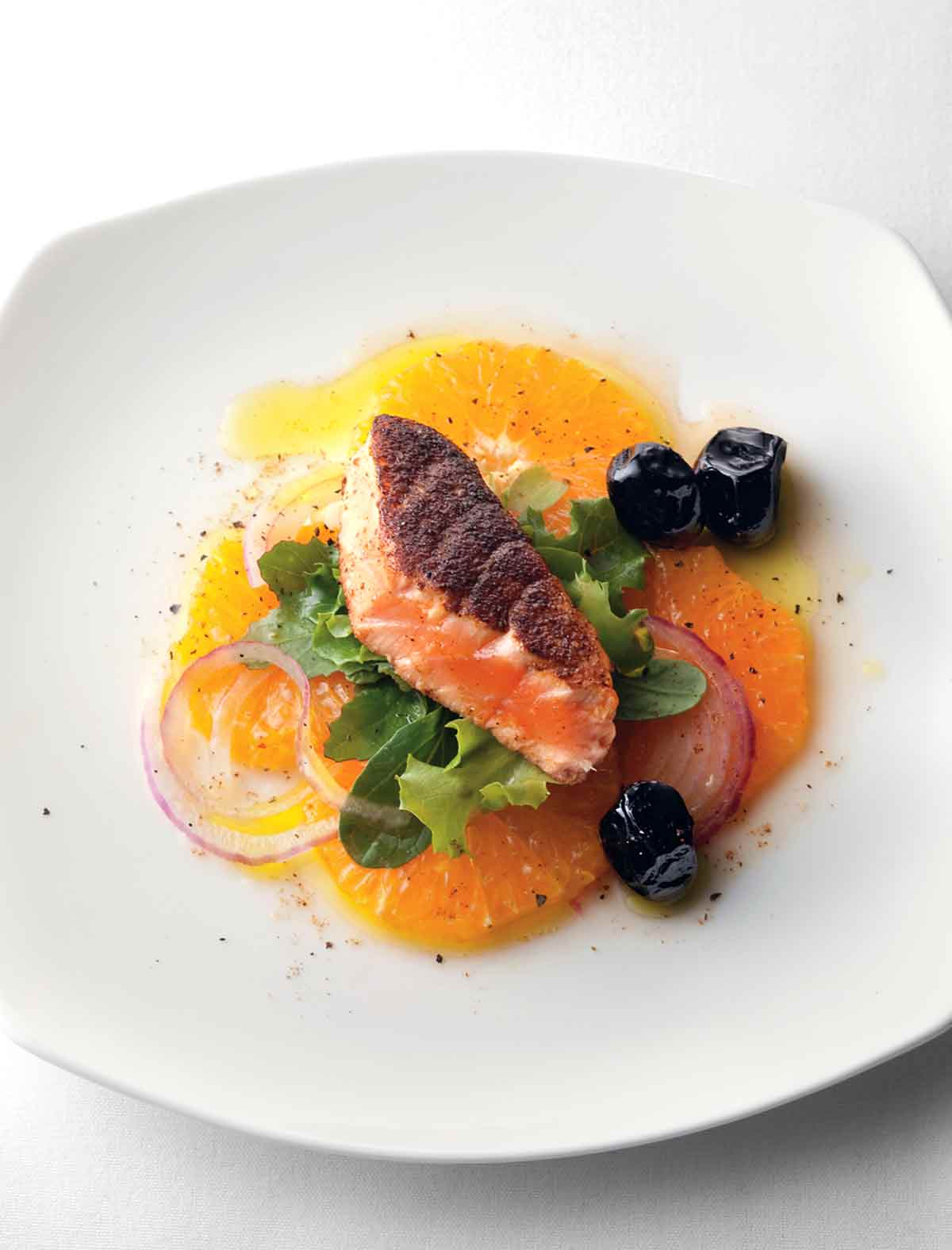
Sure, this pan-seared Moroccan salmon is swell when accompanied by the sweet tang of oranges, the briny-like-the-sea smack of olives, the crisp pungency of thinly sliced red onions, and the virtuousness of a small heap of tender young salad greens, as the author smartly suggests.–Renee Schettler Rossi
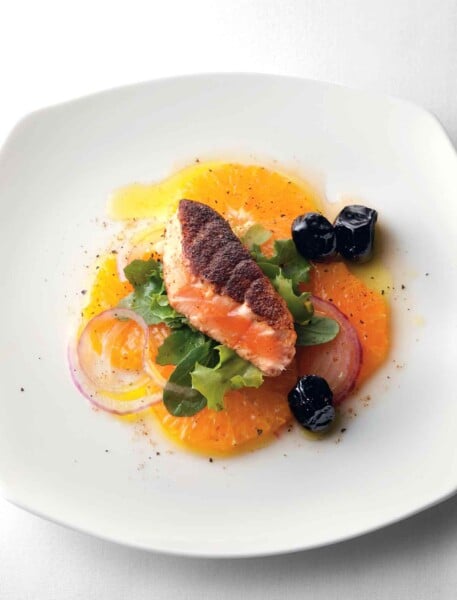
Pan-Seared Moroccan Salmon
Ingredients
- 2 oranges, preferably seedless
- 1/2 cup torn basil leaves
- 1/2 small red onion, slivered
- 10 large oil-cured black olives, pitted
- A few handfuls mixed salad greens
- 6 tablespoons extra-virgin olive oil
- 1 teaspoon chile powder
- 1 teaspoon ground cumin
- 1/4 teaspoon ground cinnamon
- 1 1/2 to 2 teaspoons salt
- Four fillets fresh salmon, without skin
Instructions
- Using a sharp knife, lop off the top and bottom of the oranges so the oranges stand upright on a cutting board. Trim the rind and the white pith from them. Turn the oranges on their sides and very thinly slice them.
- Arrange the oranges on 4 plates. Top with the basil and onion and scatter with the olives. Place the greens on top. Drizzle each salad with a little oil. Let rest while you make the salmon.
- In a small bowl, mix together the chile powder, cumin, cinnamon, and salt. Pat the salmon dry and rub the spice mixture on the top side of each salmon fillet.
- Heat 1 tablespoon of the oil in a skillet. Add the salmon, spice side down, and cook 2 minutes over high heat. Turn and cook to the desired doneness, about 2 minutes longer for rare, depending on the thickness. Arrange a salmon fillet on each salad and drizzle with the remaining oil.
Notes
Vinaigrette For Drizzling Variation
If you really want to make this spice-rubbed salmon and side salad sing, dress it with a lovely little vinaigrette made by whisking together the juice of another orange, a few drops of white wine vinegar, and some extra-virgin olive oil, then dribble it over both salmon and salad. We like it so much, we could see adding this to the rotation of go-to recipes that we turn to during crazy weeks (and save a portion to take to work for lunch the next day, keeping the salmon and salad separate).
Nutrition
Nutrition information is automatically calculated, so should only be used as an approximation.
Recipe Testers’ Reviews
This was a fast and delicious dinner! The spice-rubbed salmon was awesome and next time I’ll put it on the bottom, too! The salmon could stand on its own anytime at our house and will be in my file from now on. I cooked 6-ounce salmon fillets (thickest part measuring 1 1/4 inches) and increased the time to 2 1/2 minutes on each side. They were definitely on the rare side, but we like that with salmon.
I think this dish would be great in the summer when basil (or mint?) is plentiful in the garden. Next time, I’ll add more oranges and olives to the salad. A keeper!
This is one of the best preparations of salmon that I’ve had in quite some time! The vibrant colors of the salad are matched by its variety of flavors. The salmon was done to tender, juicy perfection and the warm spices in the rub showcase it’s wild, earthy flavor. I’m glad I used 6-ounce portions or I’d be going back to the store for more before dinner was over!
A dream. The flavors, colors, and textures were evocative of a Morocco I have yet to visit but like to think I’ve captured. I was surprised that the cumin and chile powder didn’t overpower the salmon–perhaps the cinnamon provided enough counterbalance.
At first, I wasn’t sure if just a drizzle of olive oil was enough of a dressing for all that mesclun, basil, citrus, and olives, but my tastebuds liked the sweet smokiness of the salmon set against the tart pungency of the citrus-basil, nicely napped by the oil. However, I would suggest using an extra extra-virgin olive oil, one normally used for dressings. I had some regular stuff on hand and it was a bit too heavy.
Also, I might use a lighter hand with the olives next time; I used less than asked for and cut them into slivers, but they still almost overpowered the plate. The dish tasted just fine at nearly room temperature, too, so I bet it would work for a picnic–just keep ingredients separate and assemble on site.
On a recent visit to see my sister, she told me that she’s been making this recipe on a regular basis. We made it together for dinner while I was there .This dish is very simple to make, and the results are lovely. She didn’t have oil-cured black olives, so we used kalamatas instead. We also followed the suggestion in the note and made a citrus vinaigrette to go with the dish instead of just finishing it with olive oil and we really liked that variation. The recipe’s cooking time gives you medium-rare salmon, which I like; if you want your fish more thoroughly cooked, you can cook it longer, but I’d suggest adjusting the heat downward so the spices don’t burn.
There’s quite a bit of room to play around with this dish. You could vary the citrus (grapefruit would be good), play with the dressing (maybe add some harissa), experiment with different greens, and play around with different types of olives or other additions. The recipe as written will give you a foundation for a very nice meal.
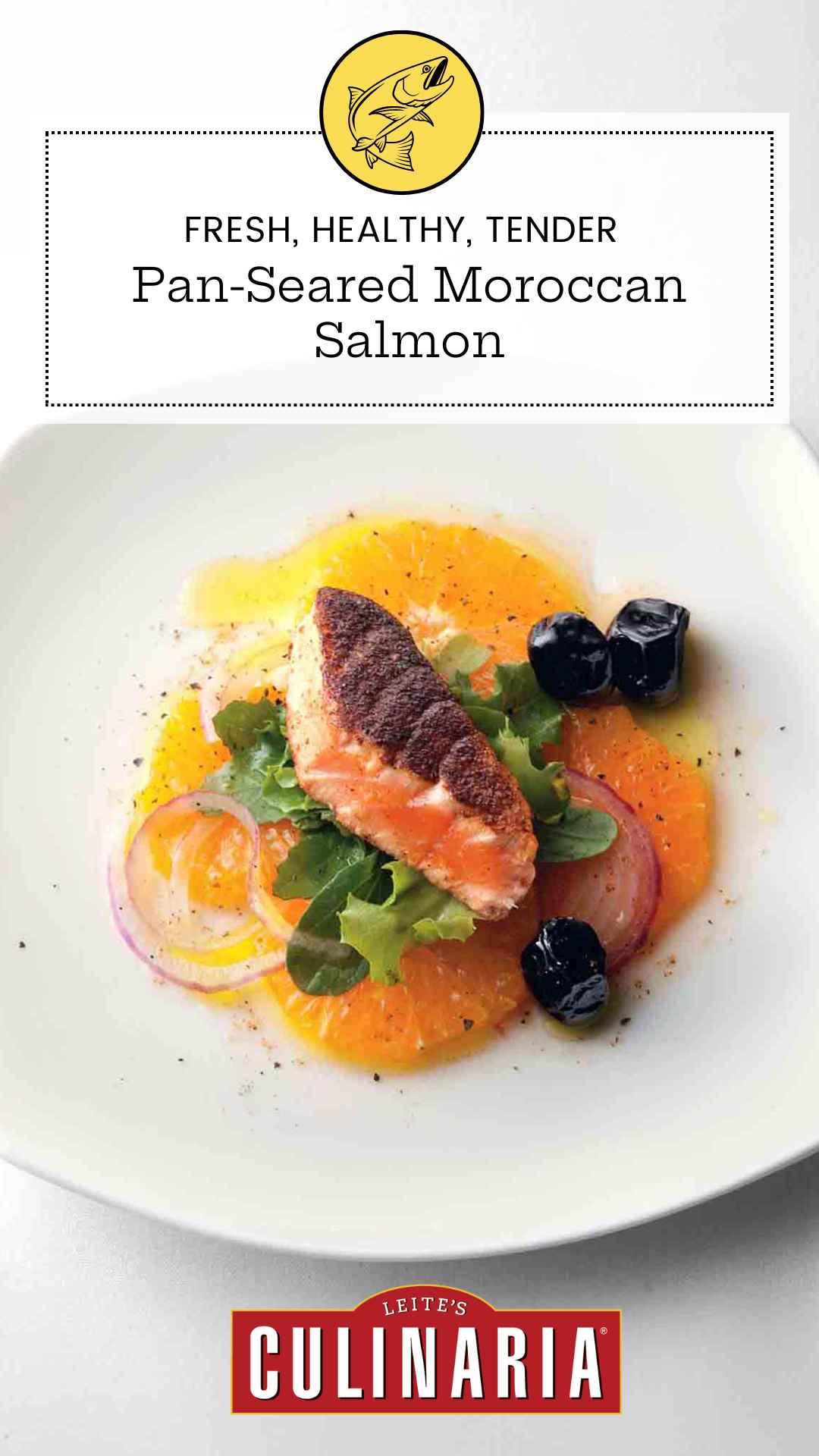
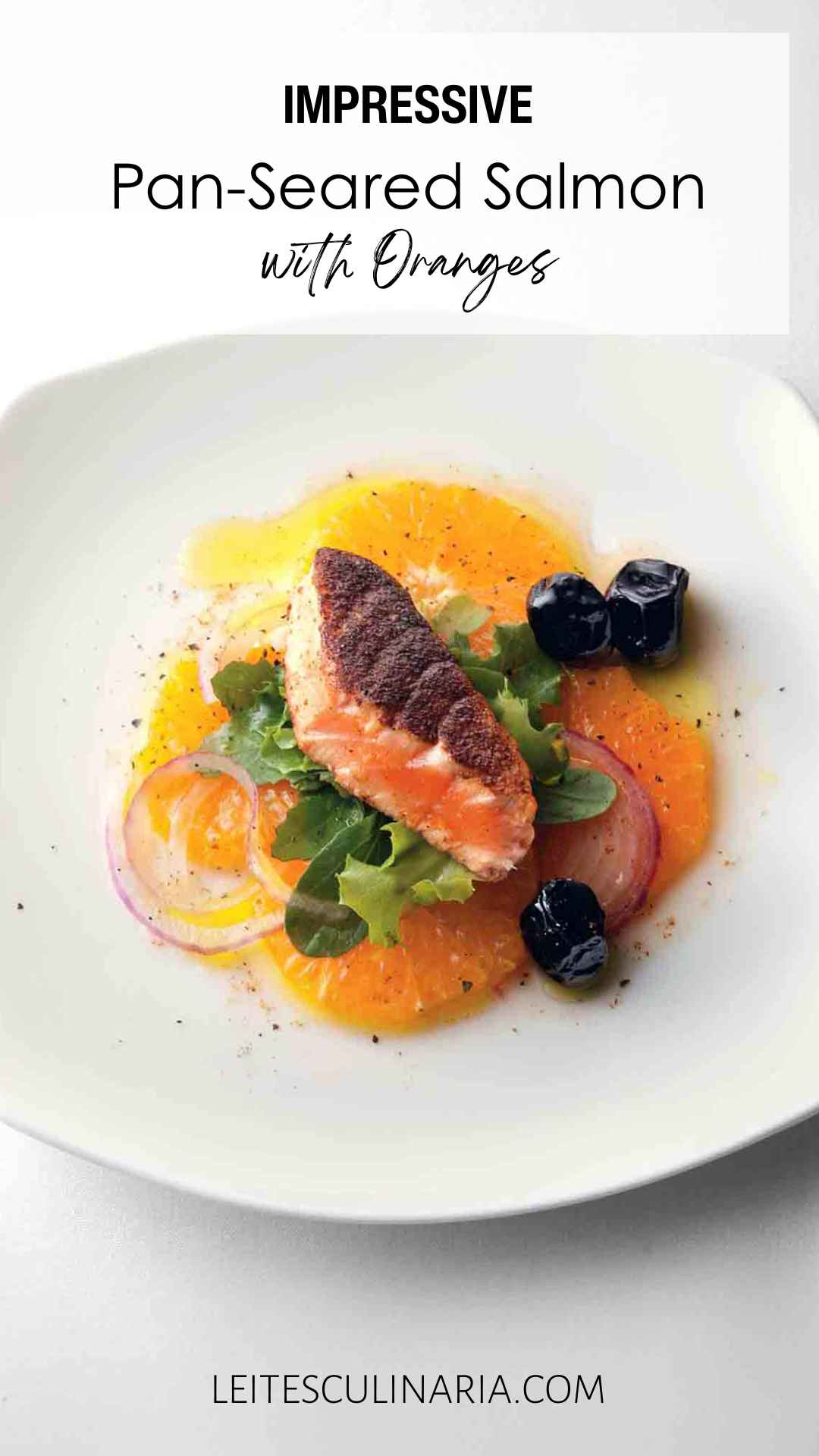
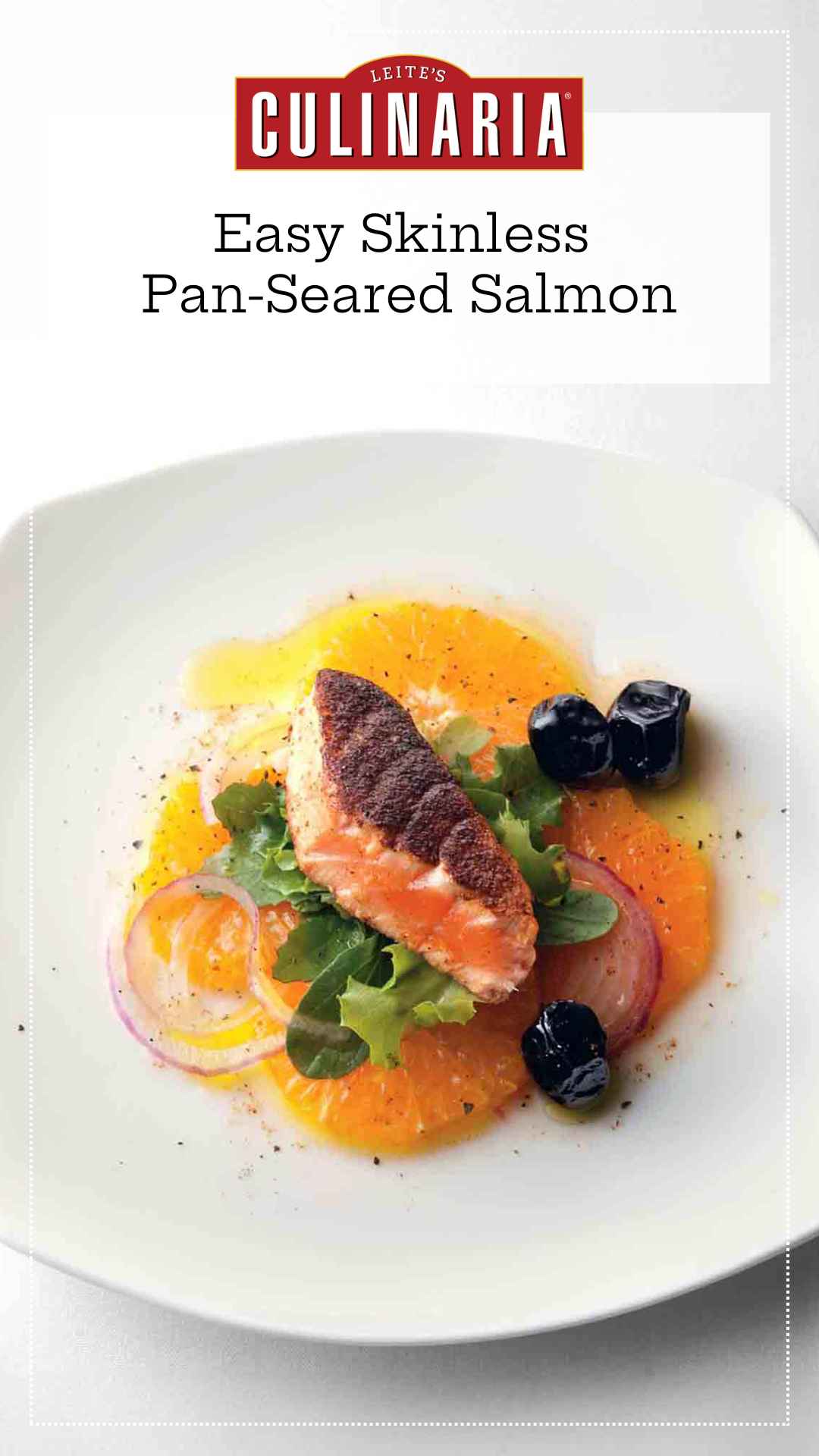
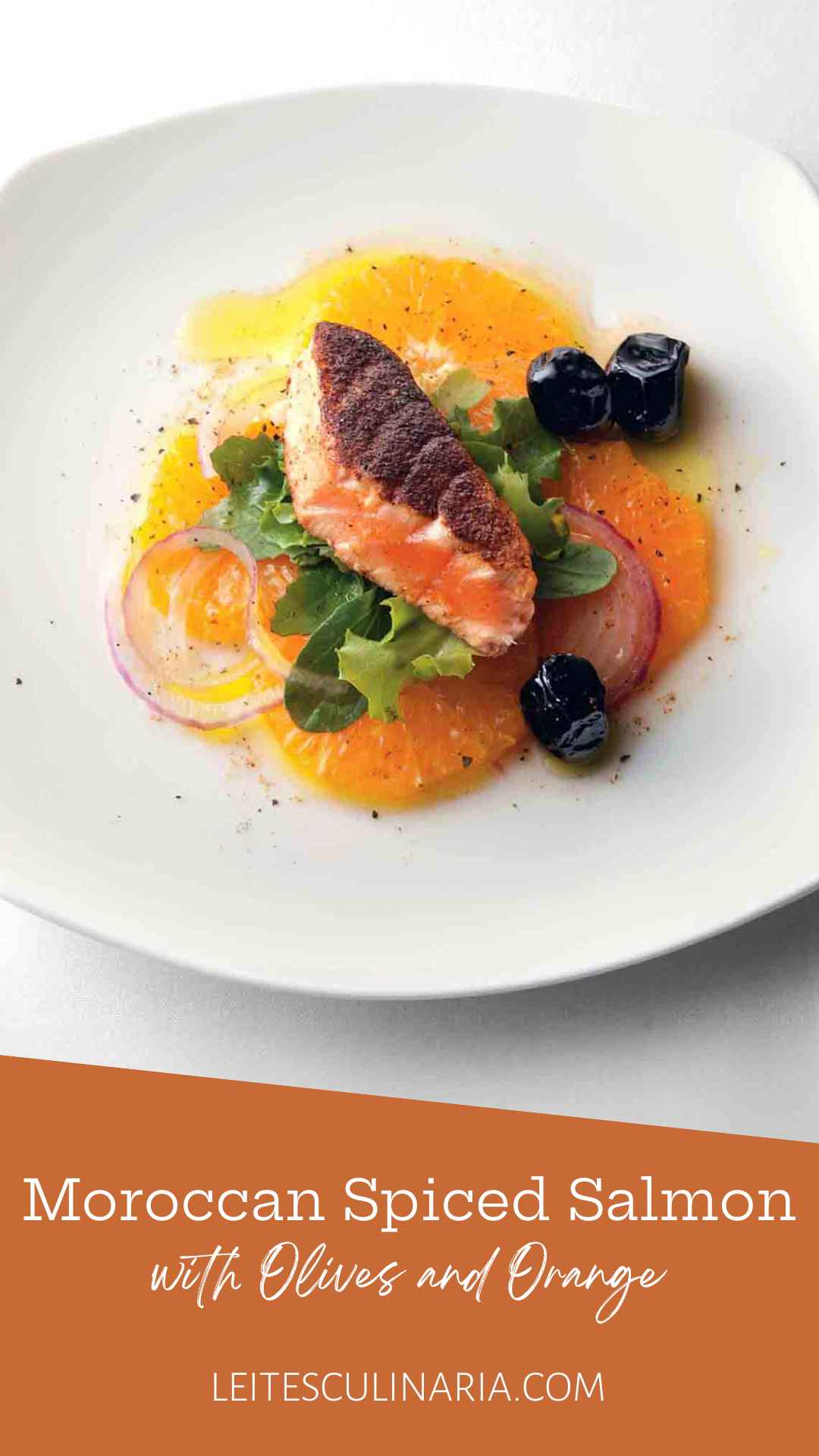
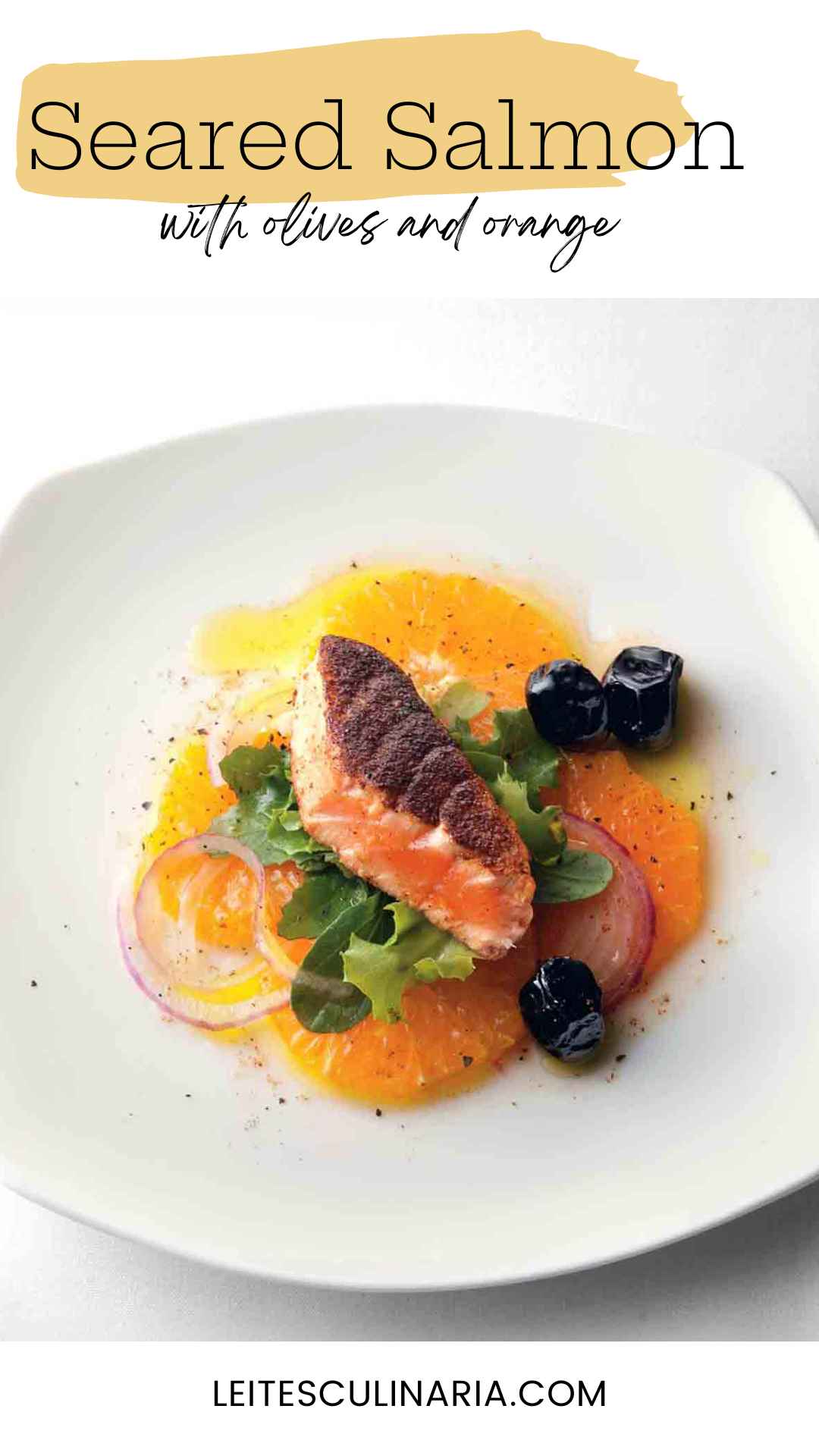
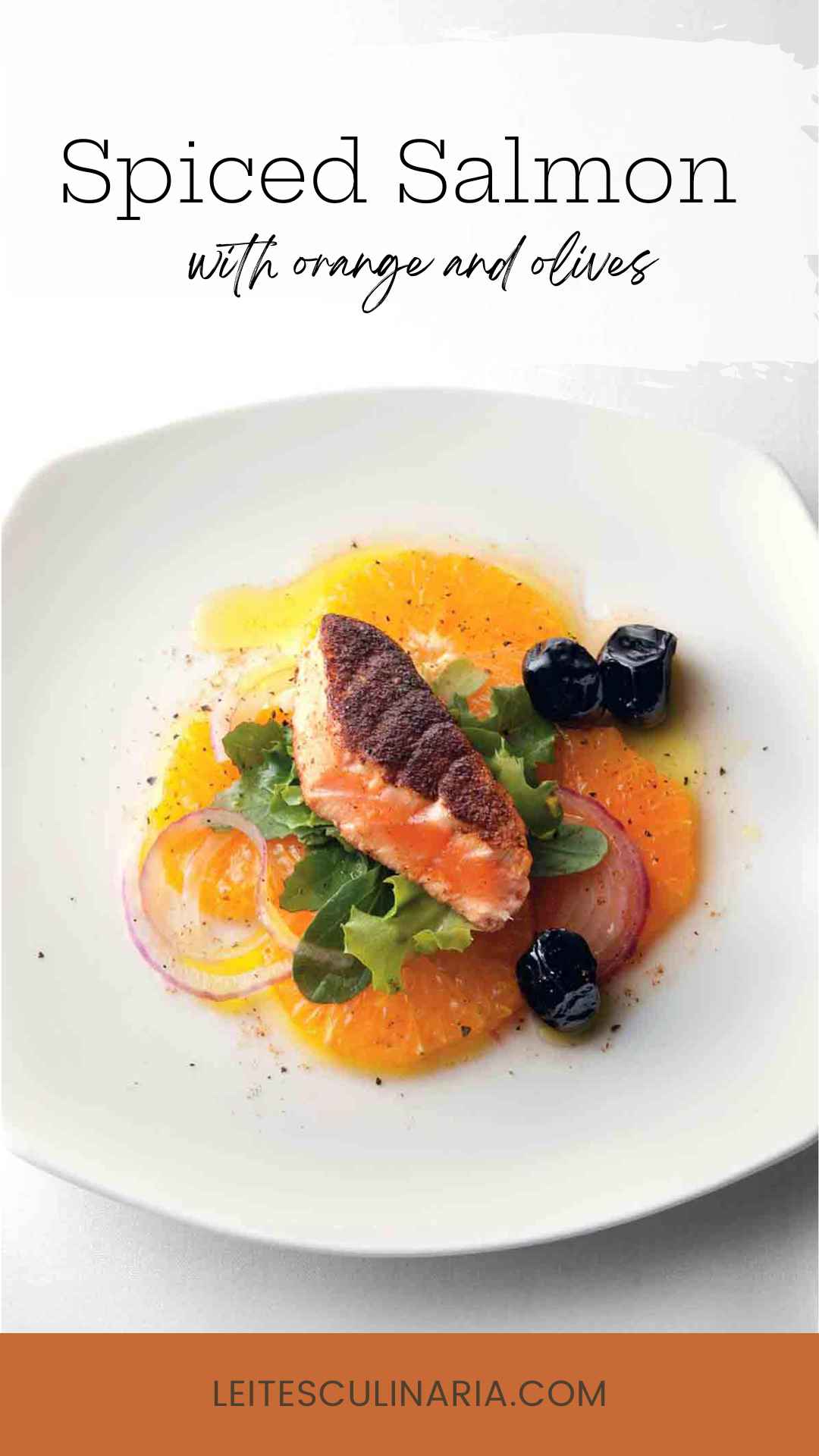













I am thinking of doing this exactly as the recipe calls for except I don’t have orange, so I am thinking to substitute mango. What do you think? I’m sending hubby to the store to see if they have oranges but I live in Costa Rica, so it’s kinda hit and miss what they have stocked. Mango is delicious and pretty colored so maybe it’s a good sub?
It will be a different flavor, Amanda, but I think it should work well. You may want to skip the olives if you’re using mango instead of orange, but it’s up to you. Do let us know how it turns out.